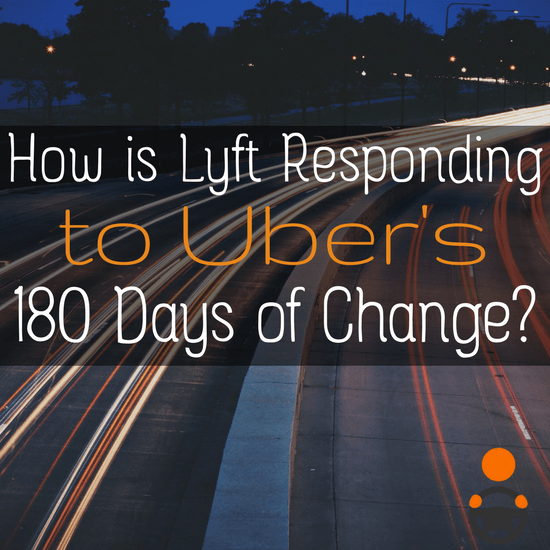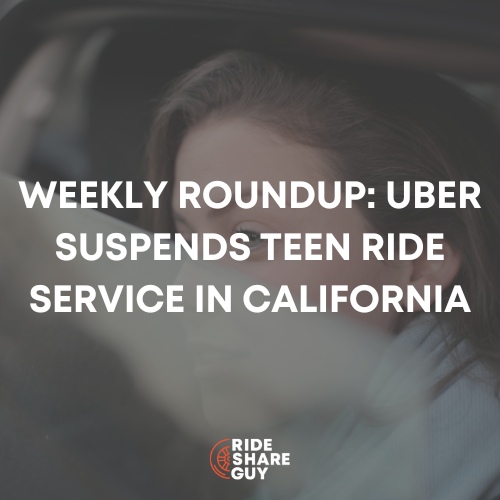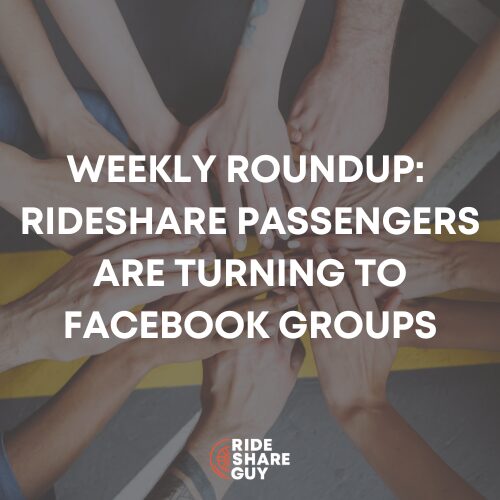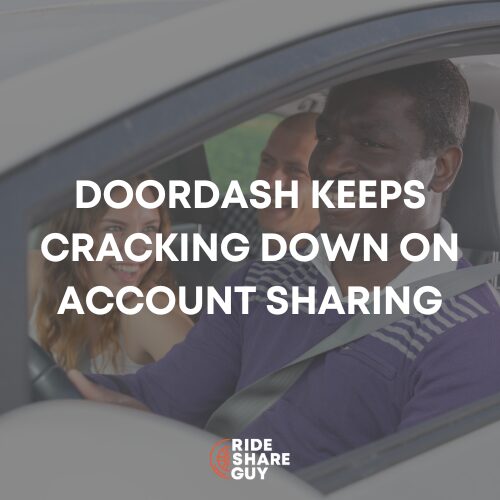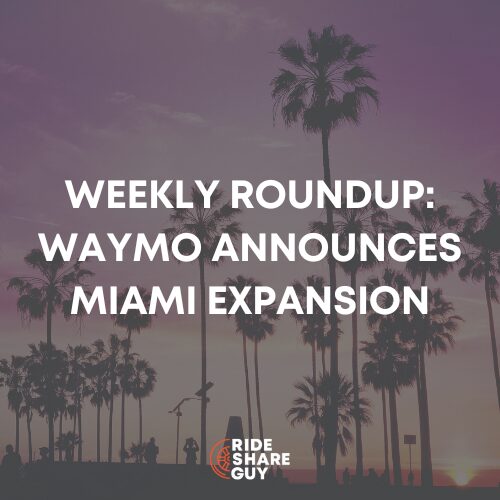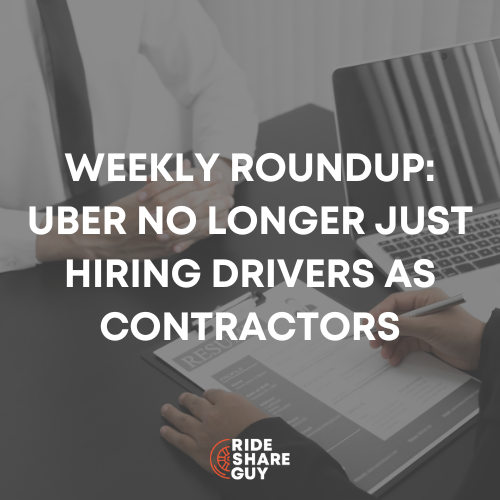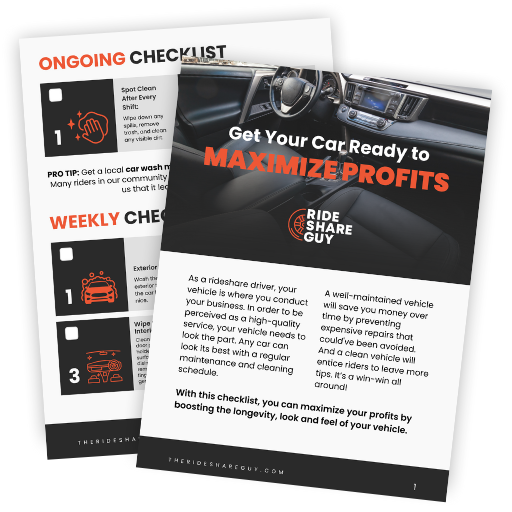With all the new driver-friendly features Uber is rolling out under it’s ‘180 Days of Change’ initiative, we began to wonder when Lyft would roll out some driver-friendly features of their own. Luckily, we didn’t have to wait long – Lyft has been working on upgrades to the driver platform for months. Today, senior RSG contributor Christian Perea outlines what drivers can expect to see in future Lyft driver updates.
Also, RSG is looking to hire! Do you know someone who is phenomenal at YouTube, can deliver consistent content, and is a good, reliable team player? If that describes you or someone you know, click here to readwhat we’re looking for and how to apply.
Uber’s been rolling out a ton of new driver-friendly features lately as part of their “180 days of change” campaign to woo drivers back to the Big U. And since we already know that Lyft and Uber copy almost everything from one other, that means Lyft should also be rolling out some driver upgrades of their own to compete for the big spotlight with drivers too… although Lyft doesn’t have to copy Uber on tipping since they didn’t require a corporate meltdown to do the right thing on tipping their drivers.
Driver Upgrades Are Coming From Lyft
Lyft has actually been working on driver features of their own over the last few months (many before 180 Days rolled out). Some are similar to ones we’ve seen on Uber while other features are actually unique to driving on Lyft. So think of this as a roundup of Lyft updates. All wins for drivers. Mostly.
Ride Guides For Finding The Next Busy Area
The Ride Guides feature uses historical data from Lyft requests to give individual drivers hints on where they should go to get their next ride. Lyft has all of this data on where and when rides are most likely to come from at any given time, and they want to use it.
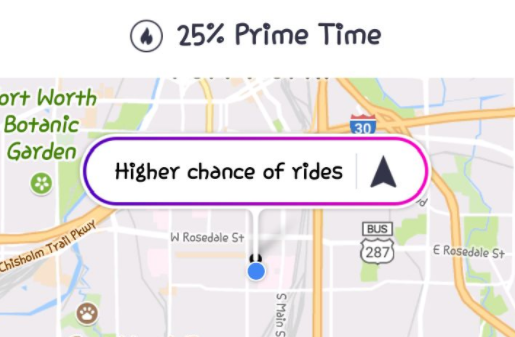
Drivers have also noted that it seems like there is a lot less Primetime nowadays, so Ride Guides should help drivers find their next ride when they can’t depend on finding any heat in the heat-maps. I think this will help a lot of newer drivers if Lyft gets it right because it will reduce the amount of time drivers just drive around and waste gas.
Most veteran drivers will point out that Ride Guides will also play a part in the War on Surge being waged by Lyft and Uber by spreading out drivers in advance and thus more efficiently managing its fleet of independent workers.
There are actually a few 3rd party apps out there like FarePilot and Rydar that are trying to do the same thing with their own algorithms. You might want to check them out if you want a 3rd party’s take on where you should drive to earn more.
6 Destination Modes Instead of 3
Uber rolled this out last month and now Lyft has joined in. Now we have a total of 12 Destination Mode/Filters to use between the two apps.
More Effective: Previously, once you put the app in Destination Mode it would timeout after 15 minutes. So that’s 3 x 15 minutes. The new setup will allow for 6 uses of Destination Mode and wait 30 minutes to timeout.
Lyft also claims they have altered the algorithm within Destination Mode to increase the chances of getting a ride, likely by assigning priority to drivers using it in a similar manner to Uber’s Destination Filter. The biggest complain about Lyft’s DF is that it just didn’t match a ride very often, so hopefully this change will help.
Last Ride Moved to Overflow Menu
If you are in a ride and want to prevent the app from “stacking” another ride on top of you, then you can hit the “Last Ride” button in the overflow menu. This means that when you drop off your current passenger, the app will automatically log you out of driver mode.
Lyft always had this feature for stopping “ride stacking” but it was difficult to locate or figure out. Previously you would have to attempt to logout of driver mode while already in a ride and most people couldn’t figure out how to do it.
Earnings Screen Overhauled For Bonuses
Lyft’s Earning’s Screen is getting a complete overhaul to show drivers their progress toward things like Power Driver Bonus, Power Zones, Average Hourly Guarantees (which I hate) and/or Weekly Guaranteed Earnings. It’s important because Lyft is obviously running a lot of promotions and sometimes it’s difficult for drivers to plan around them.
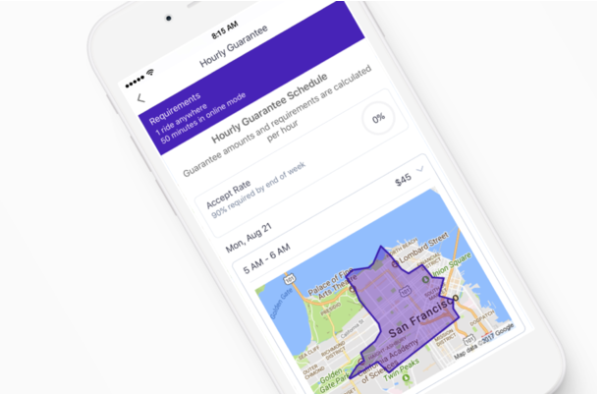
This is definitely a welcome change, because in the past the earnings screen kind of just recapped a lot of basic information around earnings, time spent in driver mode, and harbored the Express Pay button that you’re addicted to pushing.
Trouble tracking your rideshare expenses? Here’s a 30-day trial of QuickBooks Self-Employed.
I’ve actually met a lot of drivers who don’t even know about these incentives even though they drive full-time and qualify for them! Which made me wonder what the point of having such incentive programs were in the first place since they are not useful unless drivers know about them.
Promo Requirements Communicated More Clearly In-App
The new screen will now include maps and schedules of when promotions are relevant. It will also do a better job at communicating when “Power Hours” are active so drivers can plan their week accordingly.
We’ve Reached “Peak” Confusion
Until this update the all-so-important “Peak Rides” requirement located within the “Power Hours” was located OUTSIDE of the driver app and only accessible by clicking on a teeny-tiny lightning bolt, and then scrolling to bottom of a web-page that would only load if you signed up for Lyft with Facebook (or logged into Lyft’s web-portal by waiting for a text code).
This resulted in a lot of drivers getting burned and rapidly loading up the Uber Partner app. I think Lyft should just copy Uber here and drop the “Peak” rides requirement altogether. 😉
See More: Bonuses At Your Fingertips
Scheduled Rides + Rural Rollout
Uber allows riders to schedule a ride, but only Lyft allows for drivers to commit to that ride in advance from the driver app. While I don’t think this feature will be necessary in big cities where there are always plenty of drivers, I do think it could play a big part in Lyft’s expansion into rural areas.
Finding A Ride-In-The-Woods
Since Lyft is now available to 94% of Americans (and most of the US from a geographic perspective) I think the scheduled rides thing could become a big deal for rural riders and drivers. You see, I’ve driven in ruralish areas where Uber and Lyft aren’t common and one of the most common anxieties of passengers is being guaranteed a ride at all.
So if you live way-out-in-the-woods and need a ride at 4 a.m., having a driver commit in advance will make you trust using the platform. From a driver’s perspective, knowing in advance there will be a profitable ride originating from way-out-in-the-woods will make them actually commit to the pickup in the first place.
So combining Rural Rides with Scheduled Rides could actually make rideshare happen more reliably in smaller markets.
More In Testing
A lot of these changes aren’t life-changing for drivers, but you can definitely tell Lyft is motivated to keep driver products flowing out right now. There are a lot more things in testing that I’m sure we’ll hear about soon. Hopefully soon we will see a “favorite” driver feature and the passenger’s destination on the acceptance screen. We’ll let you know when they roll out or if we get any leaks from Lyft.
Drivers, which of these features are you most looking forward to?
-Christian @ RSG
